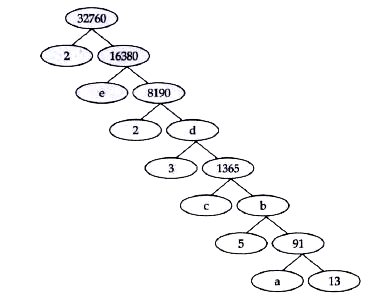Read the following text and answer the following questions on the basis of the same:
Gynoecium, is the female reproductive part of the flower. It may consist of a single or more than one pistil. These pistil may be free or fuse. Each pistils has three parts, stigma, style and ovary. Ovary has an ovarian cavity, which has one or many chambers or locules. The placenta is located inside the ovarian cavity. Megasporangia or ovules arise from the placenta.
Flowers with both androecium and gynoecium are called :
Bisexual flowers
Anther
Unisexual flowers
Androgynous
The correct Answer is:B
Step-by-Step Solution:
1. Understanding Gynoecium and Androecium:
- The gynoecium is the female reproductive part of the flower, consisting of one or more pistils, which may be free or fused. Each pistil has three parts: stigma, style, and ovary.
- The androecium is the male reproductive part of the flower, consisting of stamens, which include anthers and filaments.
2. Identifying the Question:
- The question asks for the term used to describe flowers that contain both androecium (male reproductive part) and gynoecium (female reproductive part).
3. Analyzing the Options:
- Option A: Bisexual flower - This is a flower that has both male and female reproductive structures.
- Option B: Anther - This is part of the male reproductive system, specifically the part that produces pollen.
- Option C: Unisexual flower - This type of flower has either male or female reproductive structures, but not both.
- Option D: Androgynous - This refers to flowers where the male parts mature faster than the female parts, but does not indicate the presence of both.
4. Selecting the Correct Answer:
- Since the question specifically asks for flowers that have both androecium and gynoecium, the correct answer is Option A: Bisexual flower.
5. Conclusion:
- Flowers that contain both the male (androecium) and female (gynoecium) reproductive parts are termed bisexual flowers.
---
- The gynoecium is the female reproductive part of the flower, consisting of one or more pistils, which may be free or fused. Each pistil has three parts: stigma, style, and ovary.
- The androecium is the male reproductive part of the flower, consisting of stamens, which include anthers and filaments.
- The question asks for the term used to describe flowers that contain both androecium (male reproductive part) and gynoecium (female reproductive part).
- Option A: Bisexual flower - This is a flower that has both male and female reproductive structures.
- Option B: Anther - This is part of the male reproductive system, specifically the part that produces pollen.
- Option C: Unisexual flower - This type of flower has either male or female reproductive structures, but not both.
- Option D: Androgynous - This refers to flowers where the male parts mature faster than the female parts, but does not indicate the presence of both.
- Since the question specifically asks for flowers that have both androecium and gynoecium, the correct answer is Option A: Bisexual flower.
- Flowers that contain both the male (androecium) and female (gynoecium) reproductive parts are termed bisexual flowers.
Similar Questions
Knowledge Check
Read the following text and answer the following questions on the basis of the same:
Gynoecium, is the female reproductive part of the flower. It may consist of a single or more than one pistil. These pistil may be free or fuse. Each pistils has three parts, stigma, style and ovary. Ovary has an ovarian cavity, which has one or many chambers or locules. The placenta is located inside the ovarian cavity. Megasporangia or ovules arise from the placenta.
A multicarpellary, syncarpous gynoecium is found in:APapaverBBrinjalCTomatoDAllRead the following text and answer the following questions on the basis of the same:
Gynoecium, is the female reproductive part of the flower. It may consist of a single or more than one pistil. These pistil may be free or fuse. Each pistils has three parts, stigma, style and ovary. Ovary has an ovarian cavity, which has one or many chambers or locules. The placenta is located inside the ovarian cavity. Megasporangia or ovules arise from the placenta.
In which of the following plants the number of ovules in an ovary is one ?AMangoBOrchidsCWater melonDPapayaRead the following text and answer the following questions on the basis of the same:
Gynoecium, is the female reproductive part of the flower. It may consist of a single or more than one pistil. These pistil may be free or fuse. Each pistils has three parts, stigma, style and ovary. Ovary has an ovarian cavity, which has one or many chambers or locules. The placenta is located inside the ovarian cavity. Megasporangia or ovules arise from the placenta.
Which among the following cell is binucleate in an embryo sac?AAntipodal cellBCentral cellCSynergidDFemale gamete
Stigma, Style, Ovary , Anther
View SolutionThe ovaries of different flowers may contain
View SolutionWhat we say if a flower has many pistils.
View SolutionRead the following text and answer the following questions on the basis of the same :
Amit has a packet of Candies .It consists of 288 candies .He arranges the candies in a way that first row contains 3 candies ,second row has 5 and third row has 7 and so on .
How many rows are there ?
View SolutionTerminal receptive part of pistil which act a a landing plantform for pollen is
View Solution

